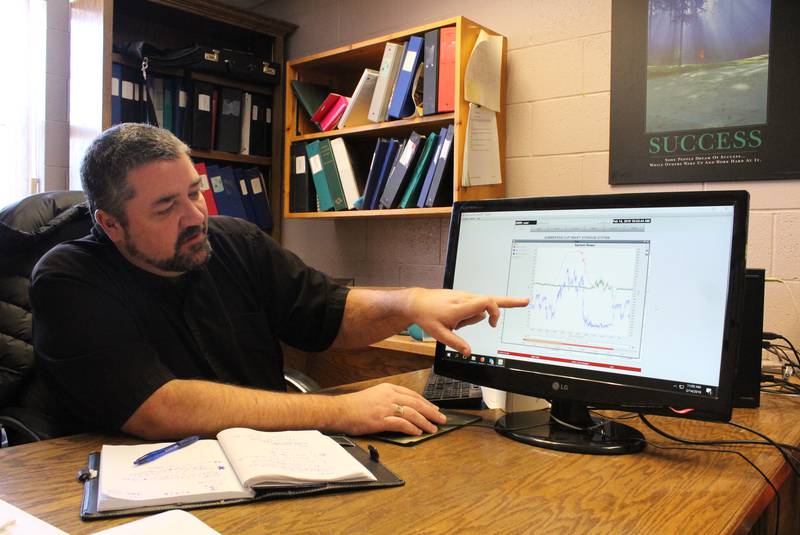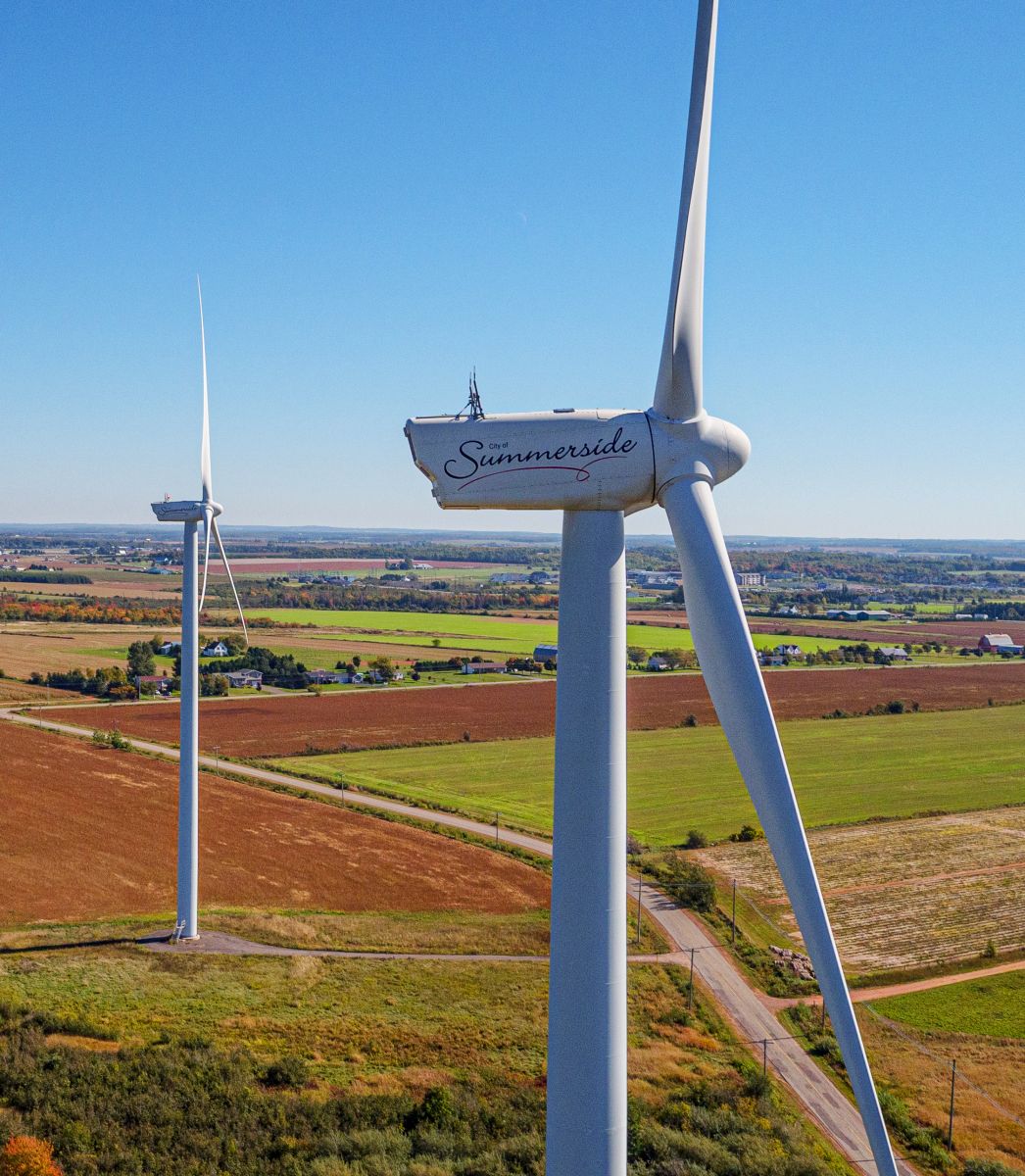Trailblazing Island Utility Uses AI for Financial and Environmental Gains
Despite the sudden drop in fossil fuel prices due to low demand during the global pandemic, the trend to rely on more renewable energy sources continues. The reduction in emissions from industry and commuters in urban settings has resulted in clearer skies and fresher air over typically smog-blanketed metropolises around the world. This transformation has given business and government leaders a taste for making these healthier conditions permanent.
.jpg)
But renewable energy proponents everywhere are challenged by an inherent characteristic in most of the generation sources - variability. Solar panels depend on the sun, and wind turbines on the wind. Wind is notoriously mercurial; wind patterns shift dramatically over the course of seasons, months, days, and even minutes. Too much wind is also a problem, since turbines may need to be shut down to avoid damage by wind velocities higher than they are certified to handle. Maximizing wind usage in smart grids is especially difficult.
Until the intermittence of renewables can be managed effectively, the pace of decarbonization will be throttled. One trailblazing municipal utility is throwing artificial intelligence (AI) at the problem.
The city of Summerside, Canada is located on Prince Edward Island (PEI) in eastern Canada. The island has significant wind penetration, with approximately 204MW capacity. The municipal utility, Summerside Electric, operates 12MW of its own, along with independent power producer (IPP) contracts, which brings this capacity to 21MW. Despite the often-plentiful wind, Summerside Electric still must import a large part of its energy from the neighboring province of New Brunswick via undersea cable. That supply is a combination of renewables and fossil fuels, with about 40 percent from coal/gas/oil over the year.
 Accurately scheduling the hourly grid import purchase from New Brunswick is an ongoing challenge. If Summerside commits to more energy than it ends up needing, the utility takes a financial hit putting energy back on the grid at less favorable pricing. If it underbuys, then it needs to purchase at the hourly marginal market pricing on the shortfall, which can be high relative to the contract pricing.
Accurately scheduling the hourly grid import purchase from New Brunswick is an ongoing challenge. If Summerside commits to more energy than it ends up needing, the utility takes a financial hit putting energy back on the grid at less favorable pricing. If it underbuys, then it needs to purchase at the hourly marginal market pricing on the shortfall, which can be high relative to the contract pricing.
When the utility uses local renewables, the cost is significantly lower (both the operating price tag and emissions). The imported energy, on the other hand, generates hard costs, as well as emissions rated at 280g CO2e/kWh. Producing more wind energy than needed is also not ideal, since selling at the market clearing price is typically lower than the purchase price - and can be rock bottom if everyone is selling power back at once. As an island community attached to mainland North America by an undersea cable connection at a single point, the city is vulnerable to outages.
In their commitment to growing a greener energy-producing community, the municipal leadership was open to new ideas and technologies. The solution they implemented is based on a distributed, data-driven, AI-enabled platform. The edge AI platform ingests data from IoT devices deployed in the field or at the grid edge, along with external data sources such as global weather feeds and simulations. It uses that data to predict the amount of energy the weather-dependent renewable facilities will produce, as well as how much energy the city will need.
AI models are trained on data collected from around the world. Imagine if everyone driving a car could learn from the experiences of all drivers worldwide, in every kind of road and weather condition, connected to one system. This is how the distributed architecture benefits the city. In this case, the module at the center manages and coordinates the edge modules, carries out the intensive computing of input data, continuously adapts the AI models, and dispatches back to the edges. Both the edge and center modules are hosted in the cloud, and offered through a software-as-a-service (SaaS) model.
 This AI system is helping Summerside Electric refine operational efficiencies and offset carbon use. The predictive technology is yielding up to 50 percent improvement in energy scheduling accuracy over the utility system baseline. This means that grid imports are better matched to actual demand. Thanks to improved scheduling accuracy, the utility is enjoying an annual cost savings in the mid six figures, which is projected to grow as it increases its use of renewables. Itis achieving an annualized average CO2e emission reduction of 4,100 tons - equivalent to driving a passenger vehicle more than 10,000,000 miles, or the amount of carbon sequestered by planting almost 68,000 tree seedlings after 10 years of growth.[1]
This AI system is helping Summerside Electric refine operational efficiencies and offset carbon use. The predictive technology is yielding up to 50 percent improvement in energy scheduling accuracy over the utility system baseline. This means that grid imports are better matched to actual demand. Thanks to improved scheduling accuracy, the utility is enjoying an annual cost savings in the mid six figures, which is projected to grow as it increases its use of renewables. Itis achieving an annualized average CO2e emission reduction of 4,100 tons - equivalent to driving a passenger vehicle more than 10,000,000 miles, or the amount of carbon sequestered by planting almost 68,000 tree seedlings after 10 years of growth.[1]
An AI-enabled approach improves on conventional, rules-based programing by executing decisions faster and solving for multiple objectives simultaneously. The utility's initial deployment has tuned the platform to maximize the use of wind energy sources. Future plans at Summerside Electric include a large solar PV and battery storage facility that will be integrated into the same energy management system.
The AI platform can also predict and optimize around battery storage. In Summerside Electric's case, it has residential and commercial thermal energy storage (furnaces and water heaters) that store energy. In the future, the system could optimize for any combination of battery or thermal storage cycling (optimal times to charge and discharge), energy market pricing, peak shaving and more. Down the road the utility could manage other behind-the-meter smart devices such as residential electric car chargers, air conditioners, even the household dishwasher - wherever the data is. The resulting grid resilience will mean that Summerside Electric's renewables can reliably supply the majority of the city's energy.
In adopting this data-driven, AI-enabled energy management strategy, the city of Summerside is punching well above its weight class. It became the first electric utility in Canada - possibly in North America - to use AI for real-time, automated energy dispatch. Other electric utilities are sitting on a wealth of data that can be leveraged by this type of energy management system. This ability to predict and optimize energy has the potential to release the throttle preventing broader renewable energy penetration worldwide.
Devashish Paul is CEO and Founder of BluWave-ai, which works to drive the transition from a centralized, carbon-based energy model so that clean energy can be produced by almost anyone, anywhere, aided by advanced, real-time computing to optimize its generation and use.
BluWave-ai | www.bluwave-ai.com
[1] Equivalencies courtesy of the U.S. Environmental Protection Agency: www.epa.gov/energy/greenhouse-gas-equivalencies-calculator
Author: Devashish Paul
Volume: 2020 September/October












